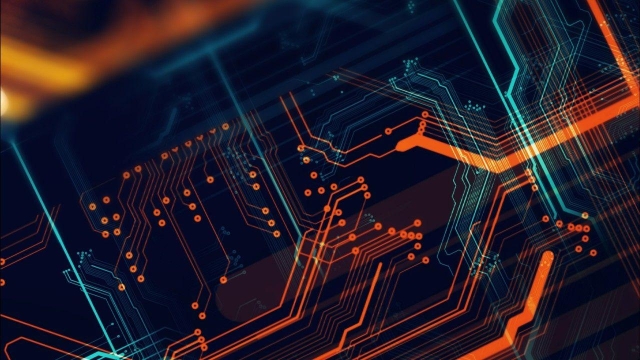
Technology has always been a fascinating and powerful tool, continuously pushing boundaries and reshaping the world as we know it. One such advancement that has captured global attention is deepfake technology. This groundbreaking innovation has enabled the creation of highly realistic and often deceptive videos and audio, blurring the line between reality and fiction. With its far-reaching implications, deepfake technology has both captivated and alarmed individuals, prompting us to question the authenticity of what we see and hear. Let us delve into this intricate realm, where the truth is no longer guaranteed, and explore the world of deepfake technology.
Understanding Deepfake Technology
Deepfake technology refers to the sophisticated use of artificial intelligence (AI) to create manipulated videos or images that appear incredibly realistic. These digital manipulations can involve superimposing one person’s face onto another person’s body, altering facial expressions or lip movements, and even fabricating completely fictional scenes. The emergence of deepfake technology has raised concerns about the potential for misinformation, identity theft, and the erosion of trust in digital media.
To achieve such convincing results, deepfake technology relies on powerful machine learning algorithms. These algorithms analyze vast amounts of data, typically consisting of thousands of images or videos of the target person, as well as the desired individual to be impersonated. Through a process called deep learning, the AI model learns and replicates the target’s facial features, mannerisms, and speech patterns.
The implications of deepfake technology are vast and far-reaching. It has the potential to be used for both harmless entertainment purposes, such as creating realistic special effects in movies, as well as malicious activities, like spreading false information or defaming individuals. With the increasing accessibility of AI tools and the internet, the ease of creating and sharing deepfake content has raised concerns about the potential for widespread misuse and the impact on society.
Understanding the inner workings of deepfake technology is crucial in order to develop effective strategies to detect and combat its negative consequences. As researchers and technologists work towards advancing the field of AI, it becomes necessary for policymakers, journalists, and individuals alike to stay informed about this rapidly evolving landscape and take proactive measures to prevent the harmful effects of deepfakes.
Face Swap Online
Implications of Deepfake Technology
Deepfake technology has far-reaching implications across various domains, causing concerns and raising questions about its potential impact on society. One prominent area where deepfakes have generated significant attention is in the realm of politics. The ability to manipulate video and audio content in a realistic manner raises concerns about the potential for misinformation, fake news, and the erosion of trust in political discourse.
In addition to its political implications, deepfake technology also poses a significant threat to privacy. With the growing accessibility of powerful AI algorithms, it has become easier for individuals with malicious intent to create convincing deepfake videos. This raises concerns about the potential for personal reputations to be damaged, as well as the potential for harassment and blackmail.
Another noteworthy implication of deepfake technology is its impact on the entertainment industry. While deepfakes have potential applications in the creation of realistic special effects and digital doubles in movies, there are ethical considerations to be addressed. The unauthorized use of a person’s likeness in deepfake videos can infringe upon their right to control their own image and potentially lead to the exploitation of individuals for commercial purposes.
Overall, the implications of deepfake technology are extensive and multifaceted. As this technology continues to evolve, it is essential to carefully consider the ethical, legal, and societal implications it presents. Striking a balance between innovation and responsible use will be crucial in ensuring that the potential harm of deepfake technology is mitigated, while still harnessing its benefits in various industries.
Combating Deepfake Technology
Deepfake technology has undoubtedly raised concerns about its potential to manipulate and deceive. However, there are several measures being taken to combat the misuse of this technology.
Firstly, technological advancements are being made to develop sophisticated detection algorithms. These algorithms are designed to identify and flag deepfake videos by analyzing various elements, such as visual inconsistencies, unnatural facial movements, or mismatched audio. By continuously improving these detection techniques, we can enhance our ability to identify and differentiate between genuine and manipulated content.
Secondly, collaborations between technology companies, researchers, and policymakers are crucial in the fight against deepfakes. Sharing knowledge, resources, and expertise can contribute to the development of robust solutions. Partnerships with social media platforms, for instance, can help implement effective moderation policies and tools that target the spread of deepfake content, minimizing its potential impact on the wider public.
Lastly, promoting media literacy and awareness about deepfakes is another fundamental aspect of combating this technology. Educating individuals about the existence and implications of deepfakes can enable them to make more informed judgments when encountering suspicious content. By fostering critical thinking skills and teaching the public about the techniques used to create deepfakes, we can collectively reduce their influence and spread.
In conclusion, combating deepfake technology requires a multi-faceted approach involving advanced detection algorithms, collaborative efforts, and widespread education. By combining these strategies, we can work towards minimizing the negative consequences associated with deepfakes and safeguarding the trust in our digital media landscape.
